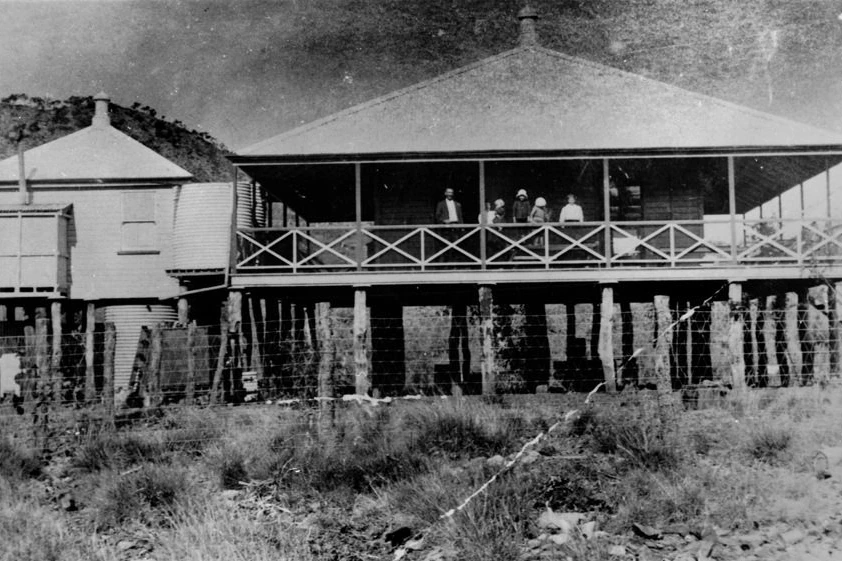MINES AND MINING
The Brisbane Courier
June 30th 1923
The Cloncurry Field
There is no question that the future of the Cloncurry copper field is of vital moment, not only to Queensland, but to Australia. Here we have some of the richest copper deposits in the British empire, but, possibly, through lack of co-operation and proper co-ordination of their owners, practically nothing is being produced.
Apart altogether from the proven areas there is an enormous amount of country to the northwest of proven ground which is known to carry copper, and its examination and development will merely be a matter of time once operations are resumed on the proven orebodies. An encouraging sign that better times are on the way was the recent visit to the north of prominent mining men connected with the Mt Elliot Company, Mr. W. L. Baillieu, of Melbourne, who was with the party, stated on his return from Cloncurry that he strongly favoured co-operation in the development of the field. Along that line prosperity may lie.

The Mount Oxide Mine
What is possibly the finest of all of the properties in the Cloncurry district, is the Mount Oxide Mine controlled by the Mt Elliott Company. The property is known to contain some of the highest grade copper ore known in the British Empire and there are enormous bodies of low grade ore in prospect. Unfortunately, the mine is not on a railway, but a branch line from Doublin, the nearest railway centre, which would not be expensive to construct, and should the mine be operated, would before long prove to be a payable proposition. At Mount Oxide over 50,000 tons of 10%, copper has been proved, there are large bodies of lower grade ore, and the Government experts estimate that there is at least 200,000 tons of ore having a general average grade of 12.5% copper waiting to be extracted.

In the southern workings on the 208ft level, it is very evident that an immense body exists containing on average 4% copper. The ore on the northern end of the same level that is beyond the rich shoot which reports to end at the north shaft also shows an average of 4% copper, and large bodies of this excellent grade ore probably will be proved in the future. The mine has only be proved to a depth of 300ft, and rich ore and also lower grade ore are below this level.
Taken as it should be as a great low grade proposition, “sweetened” by a valuable body of high grade ore, the Mount Oxide proposition appears to be a very attractive mining proposition.

The Gympie Goldfield
The future of the Scottish Gympie mine having become somewhat prominently before the public in the view of the desire of the operating company to have the State Government takeover the holdings, failing which the mine will probably shutdown. A word as to conditions of mining in the Gympie field is in disarray.

In the early days of the Gympie field the values were largely won from the reefs which were enriched in plumbage from the ancient slates. Conditions at the Gympie were probably unique. In the latter days of the field it was discovered that other gold bodies occurred. Here the reef carrying values was in contact with a diorite intrusion. This is the case with the Inglewood Dyke. The Scottish Gympie was first developed by working the reefs affected by the first system of gold precipitation. The gold was subsequently obtained from the Inglewood Dyke. If the Government ever takes over the Scottish Gympie as state property it would be almost exclusively the Inglewood Dyke that would have to be considered as a gold producer. The question that would have to be decided was whether the Inglewood proposition, entirely a low-grade ore, could be worked at a profit. This is a most difficult problem, and under present working conditions, almost incapable of a satisfactory solution. Such, at least, is the opinion of the experts.
In Various Districts
The semi-annual meeting of the Mt Cuthbert Company, which together with the Mt Elliott and Hampden Cloncurry Mines, controls most of the import copper deposits in the Cloncurry field was held at Melbourne last week. Nothing was done in the six month’s period ended February 28 on resuming operations on any of the company’s properties.
The Oak’s Consolidated offer to take over the Madison Buchannan Palmer Syndicate’s holdings was adopted at the meeting of the syndicate at Cairns last week. The Oaks Company has undertaken to provide the necessary milling facilities for the Mt Buchannan property. There is stated to be a large body of ore at the Buchannan property, which so far has proved to be only 5dwt. The Oaks plant will be installed at the Buchannan mine. If values remain at 5dwt. A large battery will be installed to treat the ore body on an economical basis.
The Billy Hughes G.M Co., reports that the sampling of the Bruce mine has been satisfactory, the reef for 190ft assaying 1oz. 8dwt. to the ton. A new reef was found and also gave satisfactory returns from many samples. One and half tonnes of concentrates from the Frederick crushing, assaying 6oz. 5dwt. to the ton and 17.5dwt. from the Perseverance crushing, concentrates assaying 9oz. to the ton, have been shipped to Port Kembla.
At the 784ft level of the North Phoenix, Gympie, work has been carried on. No startling discoveries have been made but some fair crushing ore has been developed. Lucknow reports that the shaft during the last fortnight has been sunk a further 71ft.
At the Louis, 90ft down the winze, the drive south has been extended 8ft. while there is from 4in. to 6in. of good-looking quartz, highly mineralized, no gold has been seen.